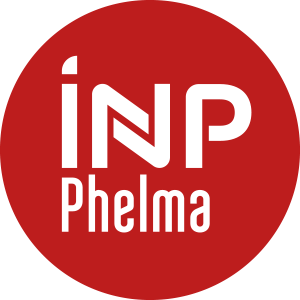Number of hours
- Lectures 0
- Projects 0
- Tutorials 0
- Internship 0
- Laboratory works 8.0
- Written tests 0
ECTS
ECTS 1.0
Goal(s)
These practices will allow you to put together the semiconductor device principles and manufacturing techniques seen previously in your formation with an experimental point of view through electrical characterization.
The electrical characterization practice aims are four folds:
1. Assess the different steps of your the clean room practice using direct measurements on devices (4-point resistance, PN junction and MOS capacitor)
2. Settle your semiconductor device knowledge and deal in depth with the comprehension of the previous mentioned devices (diode and MOS capacitor).
3. Evaluate the performances of MOSFETs and solar cells (already manufactured devices)
4. Learn to use advanced electrical measurement setups
Content(s)
Four point measurements:
Using dedicated architectures, the resistivity of materials will be determined (materials constituting the PN junction and MOS capacitor like doped silicon and metal)
PN junction:
Typical quasi-static I(V) measurements will be performed on diodes fabricated in clean rooms by the students. The aims of this training are multiple:
- become familiar with the different systems used to do the measurements (analyzer, probe stations)
- perform qualitative observations of the diode behavior in experimental conditions and confront these to the theoretical behavior of the diode.
- select different voltage range to identify the different regime of the diode
- extract the main DC parameters (threshold, saturation current, breakdown voltage etc).
- observe the effect of light on the diode behavior
MOS capacitor:
Typical quasi-static C(V) measurements will be performed on capacitors fabricated in clean rooms by the students. The aims of this training are multiple:
- become familiar with an impedance meter (LCR meter)
- proceed to the measurement in frequency on the MOS capacitor as a function of the gate bias.
- identify the different regimes
- measure the C-V curves in different enlightening conditions
MOSFET:
This part of the training aims extracting the main electrical and physical parameters of the MOSFETs. The proposed methodology will (1) allow to link the electrical characteristics and analytical models, and (2) provide a clear idea of the physical phenomena involved in the operation of the MOS transistor.
Solar cell:
This part of the training aims to characterize electrically solar cells under enlightenment conditions close to the one of the sun spectrum. The performances related to the geometry of the cells will be also investigated:
- IV characteristics under darkness => showing that the solar cell behaves like a pn junction
- measure the series Rs/ leakage Rshunt resistances and relate them to basic models.
- effect of light on IV : power supply quadrant
- vertical shift of the I-V curve (important to introduce the Sun-Voc method)
- Determine typical parameters Voc, Isc, Rs, efficiency, fill factor FF)
Prerequisites
Basic knowledge of solid state physics and semiconductor device physics is required: notion of crystal and crystallography, understanding of the origin and nature of the band structure of a semiconductor.
Basic knowledge in electronics and electrical measurements
e.g.: practices of introduction to electronics , Phelma S5
Examen écrit Session 1 : DS1
Contrôle continu Session 1 : CC1
Examen écrit Session 2 : DS2
N1 = Note finale session 1 = 80% DS1 + 20% CC1
N2 = Note finale session 2 = 80% DS2 + 20% CC1
Physique des semiconducteurs et des composants électroniques - Henry Mathieu, Edition Dunod



